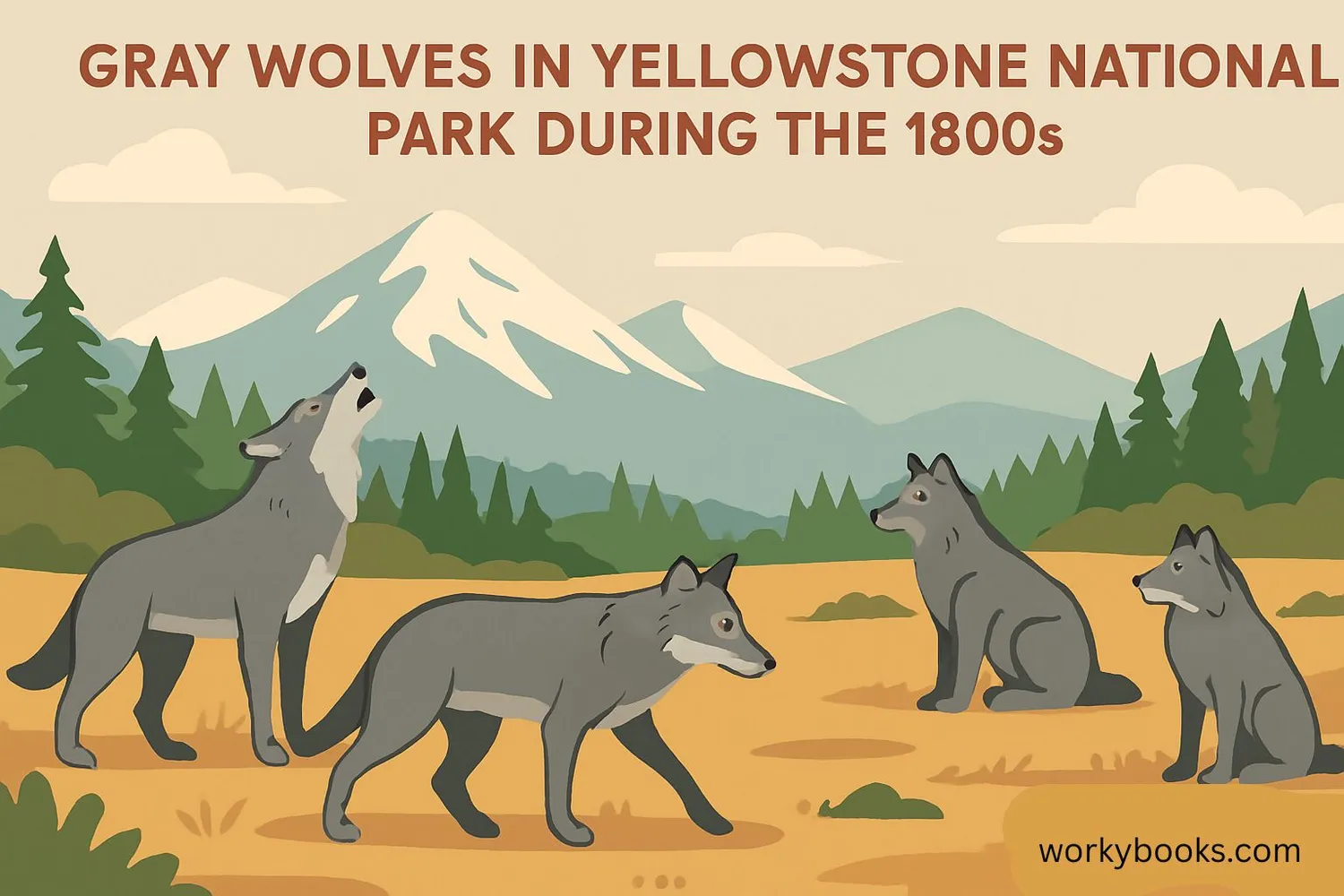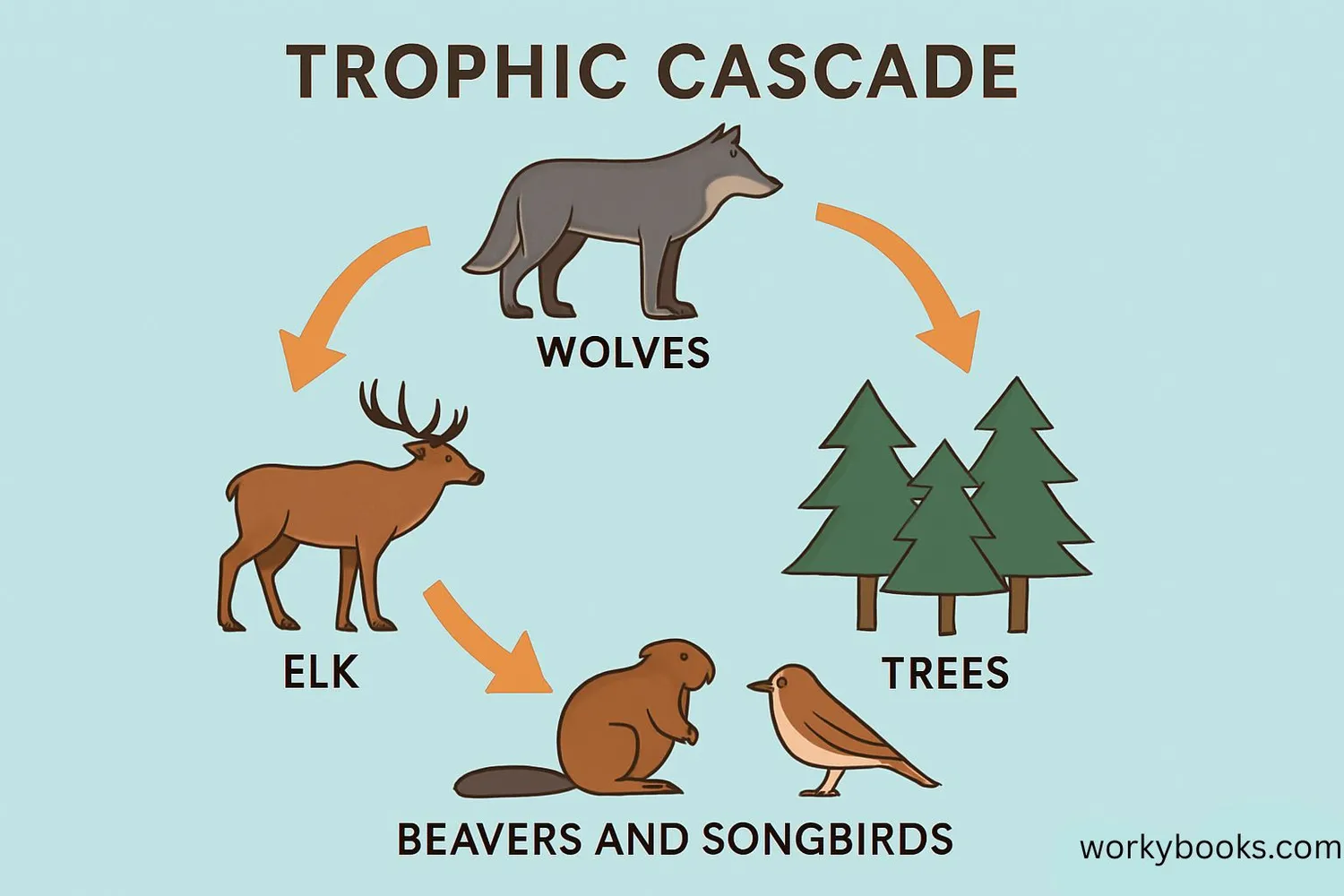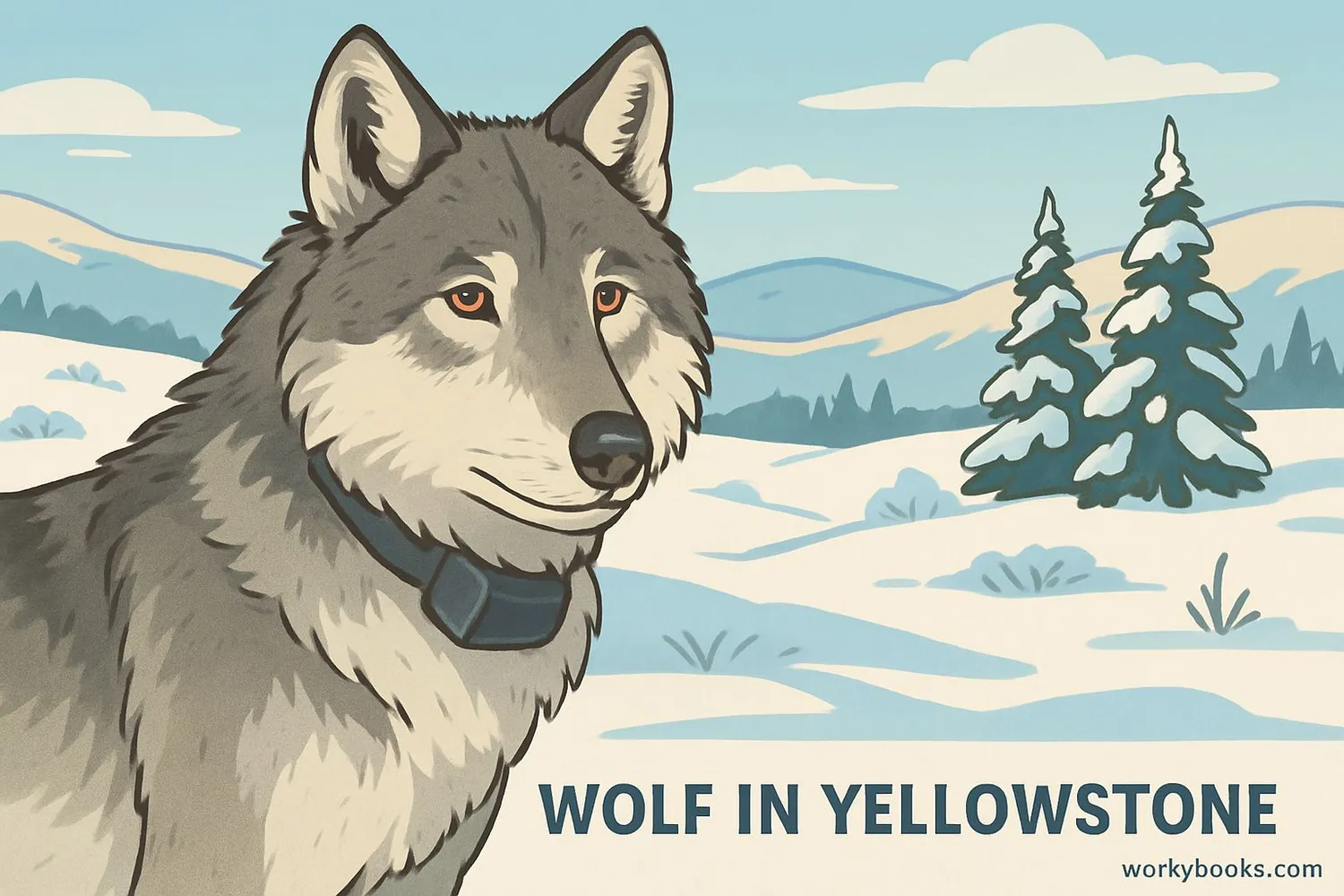Wolves of Yellowstone - Definition, Examples, Quiz, FAQ, Trivia
Discover how wolves transformed an entire ecosystem
History of Wolves in Yellowstone

Wolves were once common throughout Yellowstone National Park. These magnificent predators played an important role in the ecosystem for thousands of years. But in the 1920s, wolves completely disappeared from Yellowstone due to human activities like hunting and trapping.
People believed wolves were dangerous and threatened livestock. Without understanding their ecological importance, humans removed wolves from the park. This decision had unexpected consequences for the entire Yellowstone ecosystem.
Did You Know?
The last Yellowstone wolf pack was killed in 1926. For nearly 70 years, no wolves lived in America's first national park.
The Wolf Reintroduction Project

In 1995, something remarkable happened in Yellowstone. After decades without wolves, scientists brought 14 wolves from Canada and released them in the park. This was the beginning of the Yellowstone Wolf Project.
The project aimed to restore balance to Yellowstone's ecosystem. Scientists carefully monitored the wolves to understand how they would affect other animals and plants. The wolves quickly established territories and began forming packs.
1995-1996
31 wolves relocated from Canada to Yellowstone
Packs Form
Wolves established territories and formed family groups
Population Grows
By 2003, Yellowstone had over 170 wolves in 13 packs
Research
Scientists track wolves using radio collars and observation
Ecosystem Changes
Park begins transforming as wolves affect other species
Lamar Valley
Known as "America's Serengeti," Lamar Valley is the best place to observe wolves in Yellowstone today.
Wolves' Impact on Yellowstone

The return of wolves changed Yellowstone in amazing ways. This phenomenon is called a trophic cascade - when changes at the top of the food chain affect many levels below. Here's how wolves transformed Yellowstone:
Elk Behavior Changes
Wolves reduced elk numbers and changed their grazing patterns
Vegetation Recovers
Willows and aspens grew back where elk no longer overgrazed
Beavers Return
With more trees, beavers built dams, creating wetland habitats
Biodiversity Increases
Songbirds, insects, fish, and other species flourished
Other Predators Benefit
Scavengers like eagles, ravens, and bears gained food sources
The wolves' return showed how interconnected ecosystems are. By simply being predators, wolves helped restore balance to Yellowstone. Rivers even changed course because new vegetation stabilized riverbanks!
Yellowstone Wolf Facts

Yellowstone wolves are fascinating creatures. Here are some interesting facts about them:
Population
Yellowstone has about 100 wolves in 8 packs. Each pack has 5-10 members on average.
Pack Structure
Wolf packs have an alpha male and female who lead the group. Only the alphas usually breed.
Hunting
Wolves can travel 30 miles in a day while hunting. They mainly eat elk, deer, and bison.
Research
Scientists use radio collars to track wolves' movements and study their impact.
Wolf Watching
The best time to see wolves is at dawn in winter. Lamar Valley is called "Wolf Alley" for good reason!
Yellowstone Wolves Quiz
Test your knowledge about Yellowstone wolves with this quiz! Answer all 5 questions to see how much you've learned.
Frequently Asked Questions
Here are answers to some common questions about Yellowstone wolves:
Yellowstone Wolves Trivia
Discover amazing facts about these remarkable predators:
Conservation Milestone
Yellowstone's wolves were the first to be reintroduced in the United States, setting a precedent for wildlife conservation worldwide.
Legendary Alpha Female
Wolf 40 of the Druid Peak pack was known as the "Queen of Yellowstone." She had 20 pups in her lifetime and led her pack for 5 years.
Impressive Hunters
A single wolf can eat up to 20 pounds of meat in one meal. They can cover over 30 miles in a single day when tracking prey.
Remarkable Success
The reintroduction of wolves to Yellowstone is considered one of the most successful wildlife conservation efforts of the 20th century.


